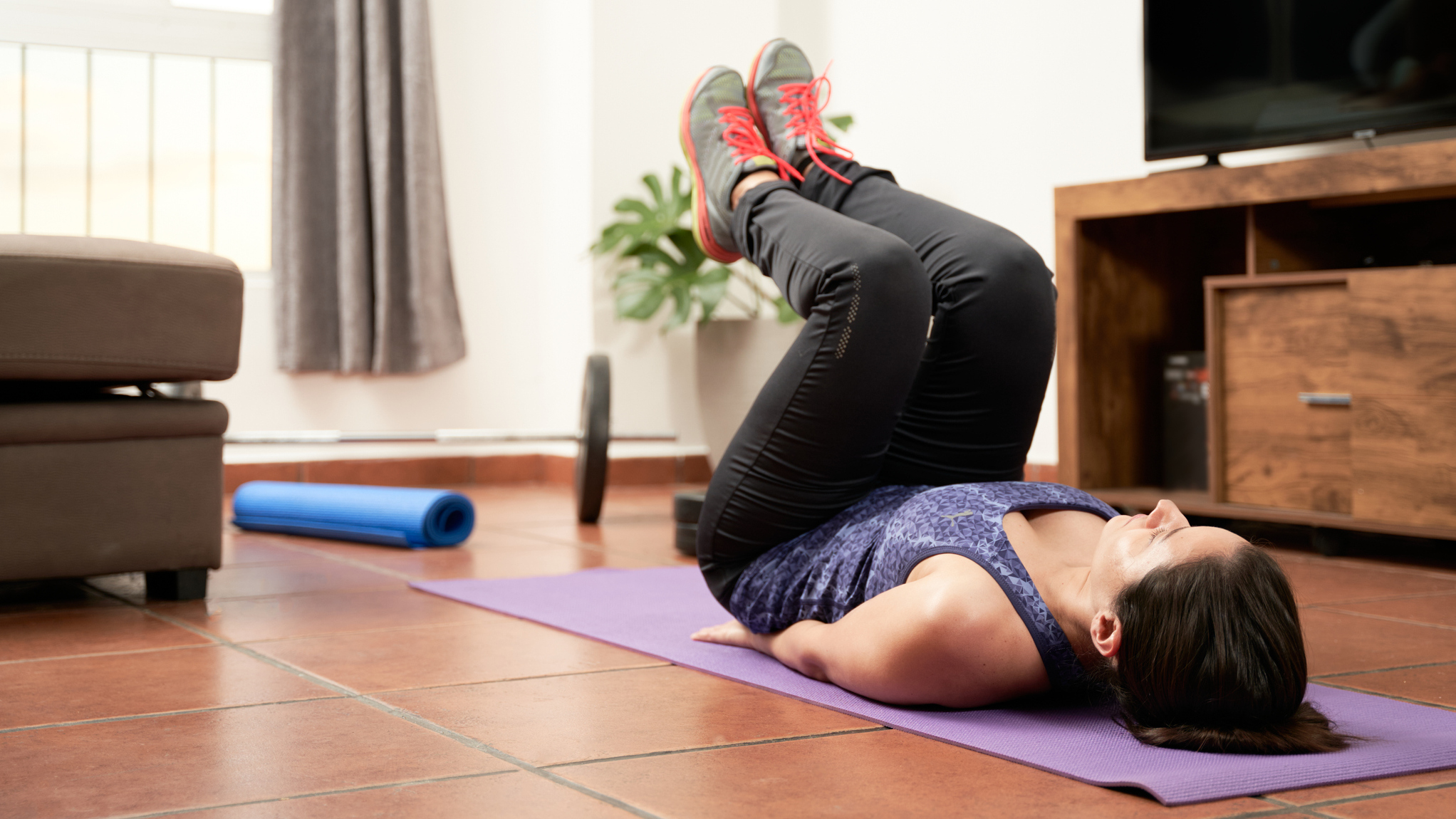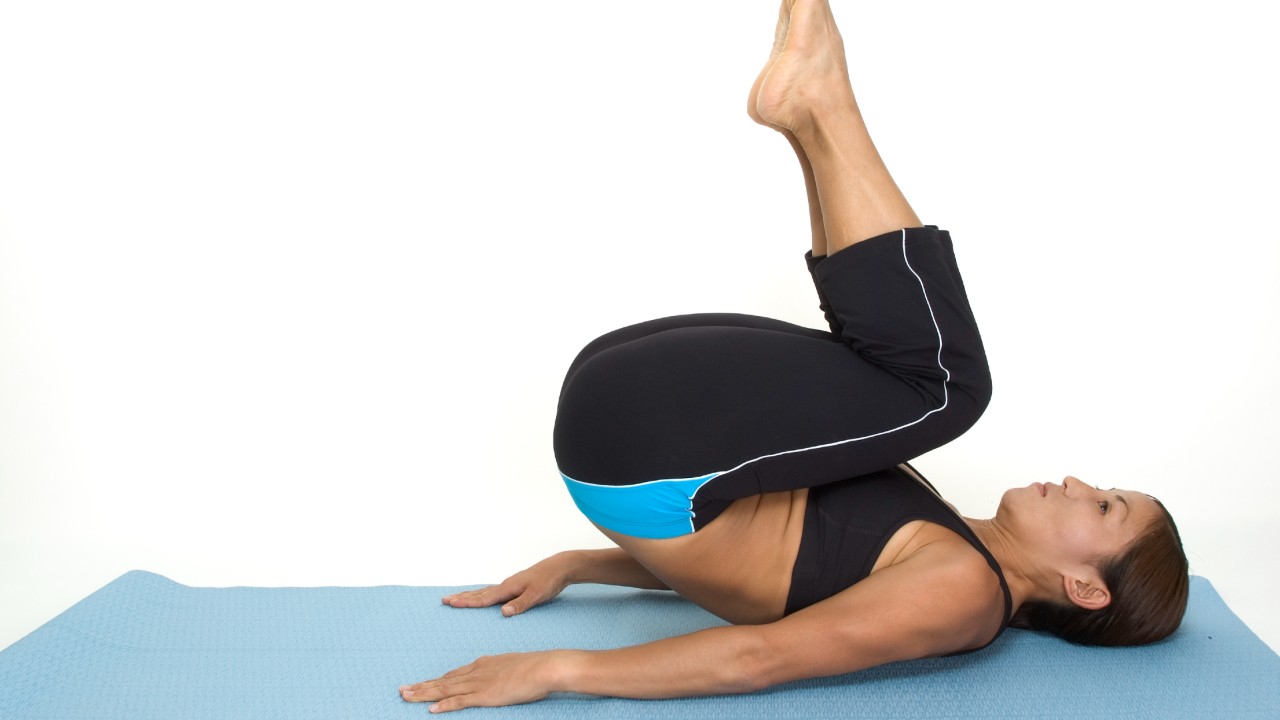How To Do The Reverse Crunch
Flip the classic crunch for a more effective abs exercise

It’s generally wise to master the standard form of an exercise before you move on to any kind of variation. When it comes to the crunch, though, there’s an argument for starting in reverse.
While the crunch has gone out of fashion—even though when done correctly it’s a perfectly fine abs exercise which can actually help prevent as much as cause lower-back pain—the movement required to perform the reverse crunch is harder to get wrong. But of course, to get the abs-building benefits you want to do it right. Here’s how to do the reverse crunch.
How To Do The Reverse Crunch
Start lying down with your arms by your sides. Raise your legs so your thighs are perpendicular to the floor and your knees are bent at a 90° angle. Breathe out and contract your abs to bring your knees up towards your chest and raise your hips off the floor. Hold for a beat in this position, then slowly lower your legs back to the starting position.
Moving slowly with complete control is key to the reverse crunch. This keeps the abs under tension for a longer period and prevents you from putting strain on your lower back, which can happen if you rush the reps. If you’re arching your lower back when lowering your legs, that’s a sign you’re not moving in a controlled fashion.

Benefits Of The Reverse Crunch
“It’s a very safe exercise,” says celebrity trainer and Lumen ambassador Don Saladino. “We’re not putting the spine into flexion.
“I prefer the reverse crunch over a traditional crunch because with a traditional crunch you can get a lot of forward head posture.”
Don Saladino has trained celebrities including Ryan Reynolds, John Krasinski and Blake Lively, and has appeared on the cover of Muscle & Fitness magazine twice. He is NASM-certified and opened the New York City gym Drive 495 in 2005.
Are reverse crunches good for lower abs?
The reverse crunch has a reputation for targeting your lower abs, the shorthand for the lower portion of your rectus abdominis, but Saladino stressed that the degree to which this is true varies from person to person. “We are all going to target them a bit differently depending on how much tension we can create in that area,” he says.
“To say the reverse crunch is going to put more strain or emphasis on the lower abs might be true in certain cases, but others may feel the reverse crunch in the entire abdominal region.”
Reverse Crunch Variations
Medicine ball reverse crunch
Place a medicine ball between your knees and hold it there throughout the exercise. The weight enhances the muscle-building benefits of the reverse crunch and will also help ensure you are performing the exercise with control.
Get the Coach Newsletter
Sign up for workout ideas, training advice, reviews of the latest gear and more.
Reverse crunch with resistance band
The key to a successful reverse crunch is moving in a controlled manner so your abs are kept under tension throughout, and adding a resistance band to the equation only increases the tension involved and hence the abs-sculpting benefits of the exercise. Attach the band at the base of a pole and loop it around your ankles so there is tension in the band when your feet are in the lowered position. Bring your knees up to your chest and raise your hips as normal, then slowly lower back to the start position, resisting the pull of the band as you do so.
Reverse oblique crunch
To switch the focus of the exercise so you target your side abs muscles, add a little twist. Set up in the same way, lying down with your feet raised off the ground, but when you raise your knees towards your chest twist them slightly to one side to contract your obliques on that side. Lower slowly and then repeat on the other side. Be careful not to twist so far to the side that you lose your balance.

Nick Harris-Fry is a journalist who has been covering health and fitness since 2015. Nick is an avid runner, covering 70-110km a week, which gives him ample opportunity to test a wide range of running shoes and running gear. He is also the chief tester for fitness trackers and running watches, treadmills and exercise bikes, and workout headphones.
- Lois MackenzieFitness writer
